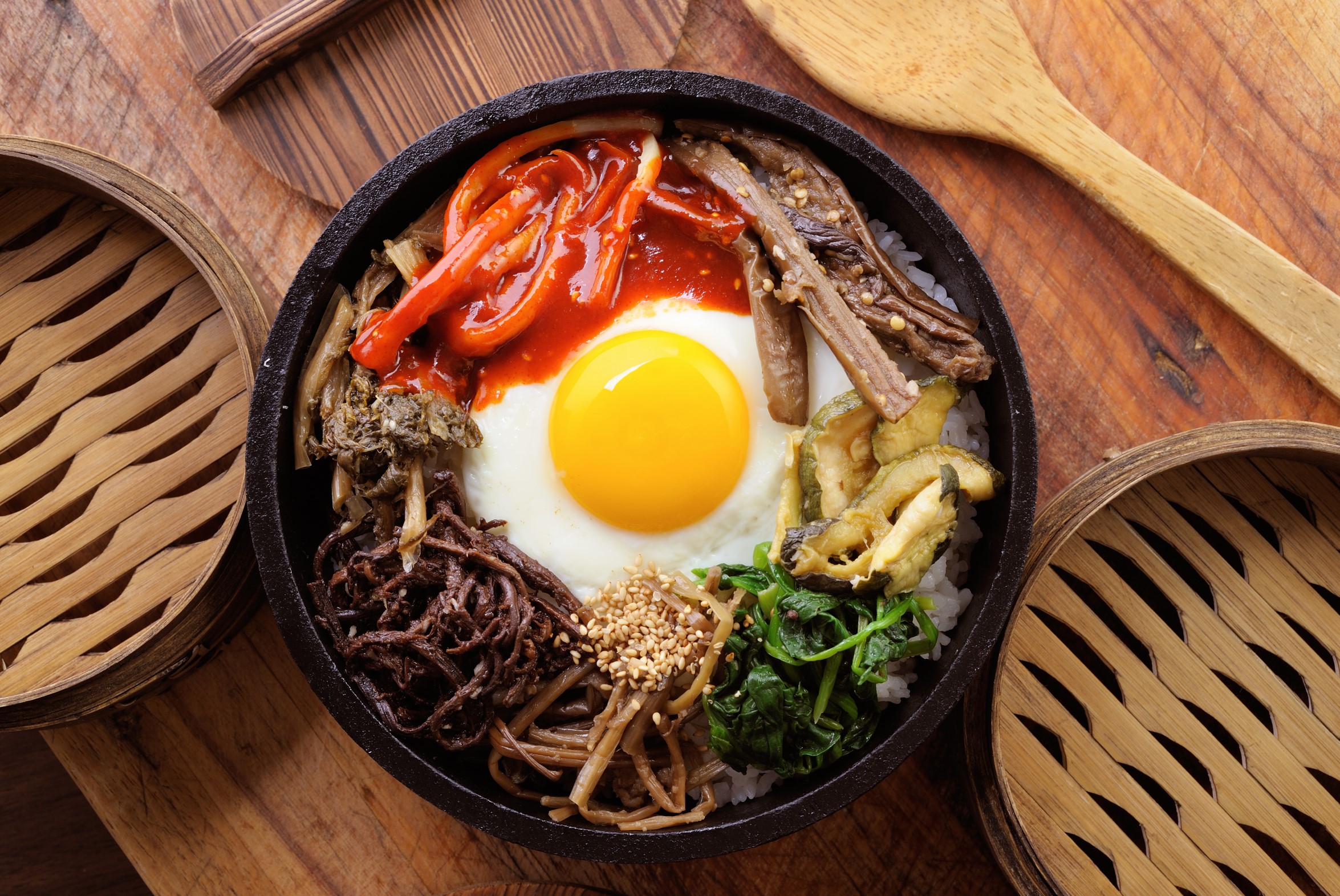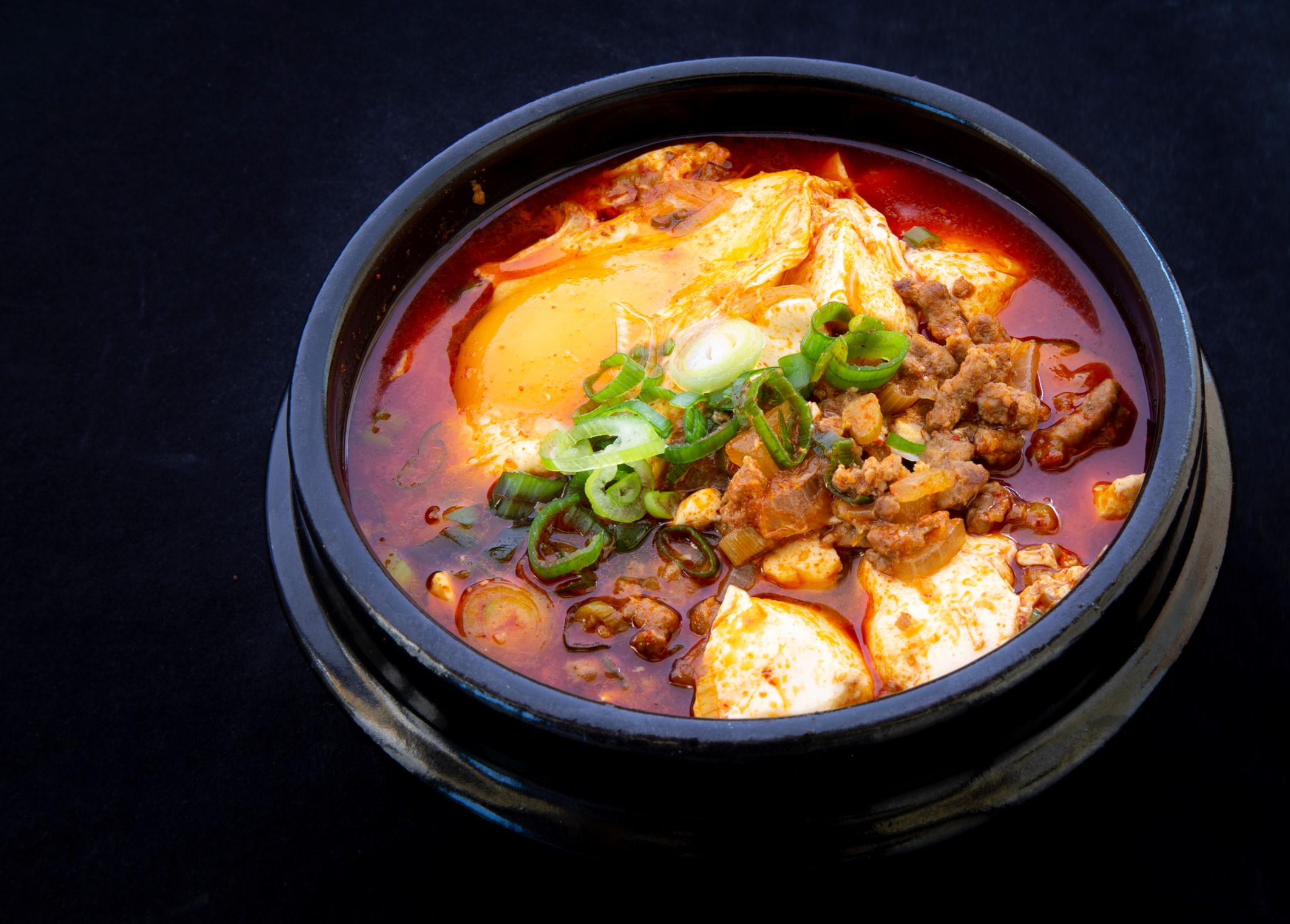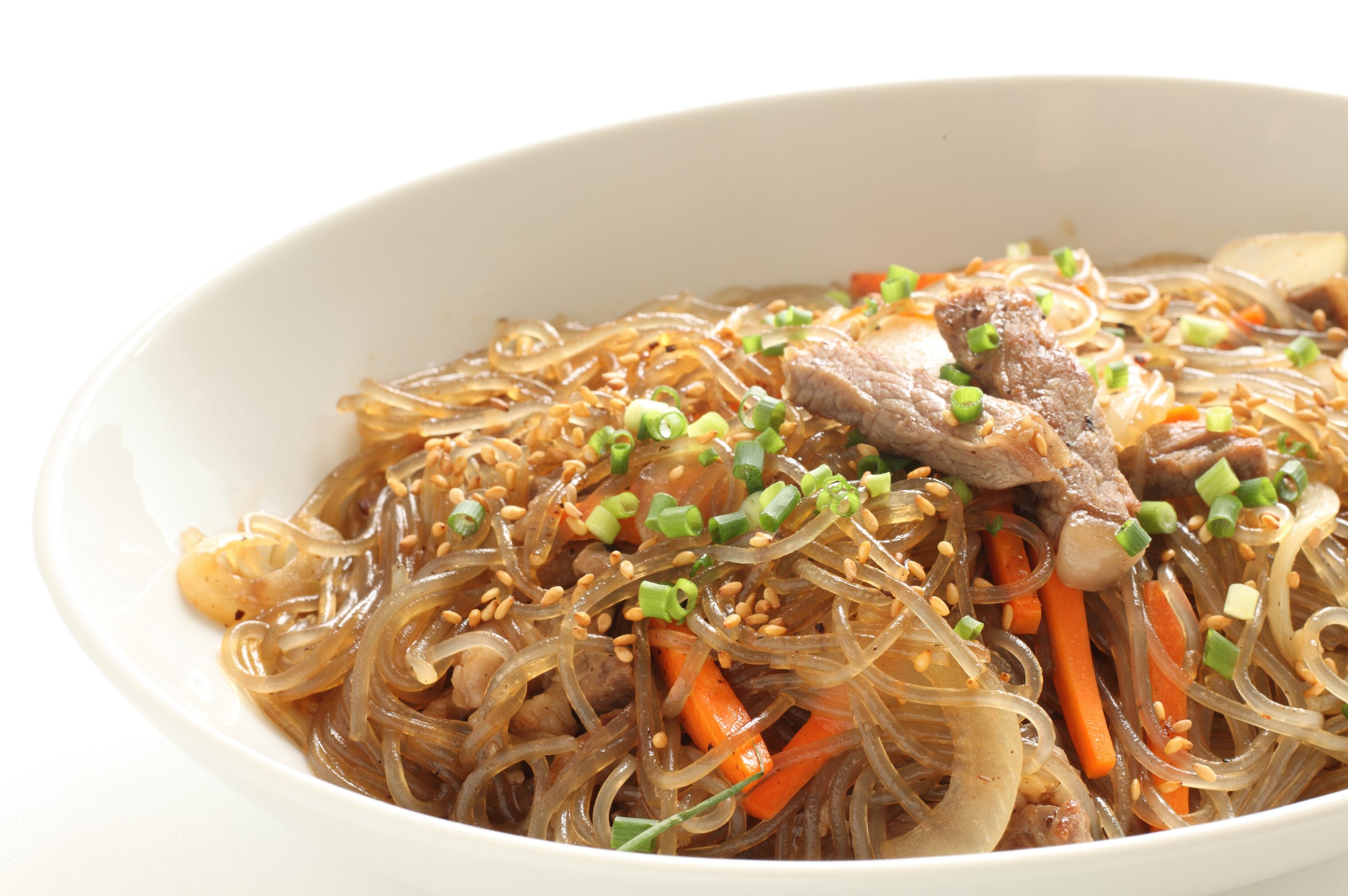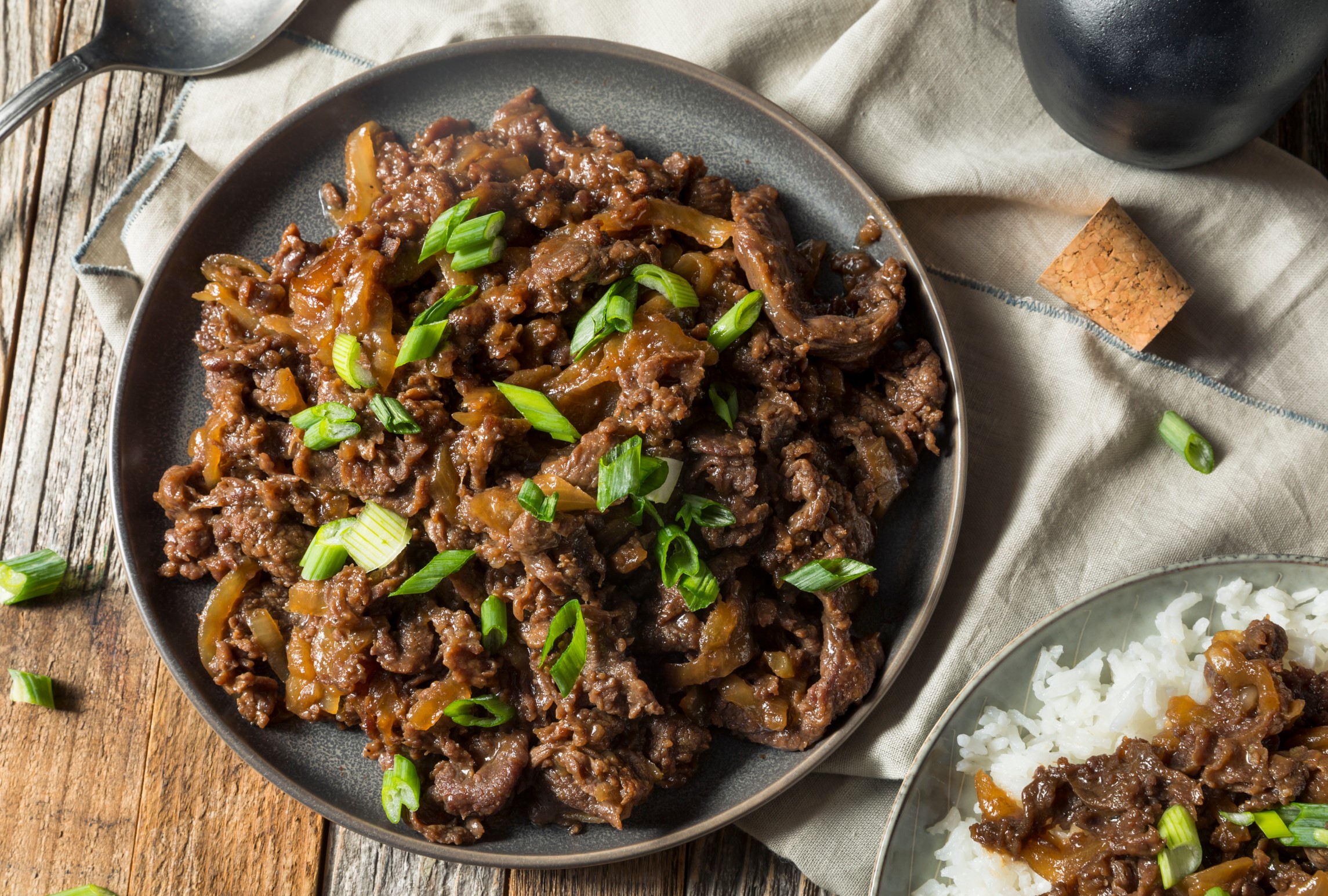Korean Dishes
Learn more about authentic homemade Korean meals
Korean cuisine is an evolving form of the culinary arts, due to influences of both Western and Eastern cultures over time. Though some aspects like fermentation and the use of fresh vegetables remain unchanged, many flavors have evolved to fit the international palate. Here are a few Korean dishes that have changed the global understanding of Korean cuisine and what its flavors are all about:
Bibimbap (Mixed Rice)
Korean cuisine is a harmonious balance of flavor and textures. A great example of this is bibimbap: a mixture of rice, vegetables, herbs, meat, and fermented gochujang. When combined and mixed, this is a perfect representation of what the diversity in Korean cuisine represents. Texturally crunchy vegetables are offset with soft, fluffy eggs and white rice — finished off with a signature kick of spicy fermented gochujang.
Bibimbap traces its origin back to the Korean reign of King Sejo (1455-1468), the early period of the Joseon Dynasty. It was originally called “goldongban,” meaning “rice mixed with various side dishes.” Cooked on the eve of the Lunar New Year, traditional Korean recipes would clear out the past year’s pantry by pairing ingredients with white rice. This dish has recently been revitalized through Korean media and entertainment as celebrities, reality TV shows, and Korean music icons have expressed their love of this homemade dish.
Today, bibimbap has taken the world’s center stage, with Korean restaurants everywhere serving this beloved dish.
Sundubu Jjigae (Silken Tofu Stew)
Local Koreans will be the first to proclaim their love of hot and spicy soups, known as “jjigae.” None of them are more famous than sundubu jjigae, a piping hot stew of tofu, meat, and vegetables. The stew is famously served in a stone pot with soft silken tofu as the main ingredient. The stew becomes a mixture of fresh vegetables, silky-soft tofu, and a hot spicy broth that warms the soul of anyone taking a sip. This is the ultimate Korean comfort dish.
During the Korean war in the 1950s, U.S. soldiers introduced popular Western ingredients to Korea, such as processed American cheese and Spam. Today, a popular rendition of jjigae is “budae jjigae” or “army stew” which combines cheese, sausage, instant noodles, and Spam into the jjigae stew.
As the recipes of jjigae continued to evolve through the years, so did the many restaurants worldwide serving it. Today, you can find countless variations of this comfort dish in almost every Korean restaurant you visit.
Japchae (Glass Noodle Stir Fry)
Meaning “mixed vegetables” in Korean, japchae consists of sweet potato noodles stir-fried with colorful vegetables and seasoned meat. The noodles are known to have a bite similar to that of al dente pasta — a chewy springiness often coveted in many Eastern cultures. Japchae is a great representation of a Korean stir-fried noodle dish that’s aromatic, texturally complex, and deeply flavorful.
Japchae is often eaten on special occasions and Korean holidays. The origin story of these stir-fried glass noodles are rooted in the 16th century, when religious beliefs of vegetarianism spread throughout Korea. At the time, japchae was made only with a mixture of fresh vegetables and mushrooms. It wasn’t until the arrival of the Mongols centuries later that meat was introduced into the traditional dish. Since then, japchae has become a comfort dish for celebrations and and homecooked dinners alike.
Bulgogi (Korean-marinated beef)
Bulgogi is an iconic cut of Korean marinated beef. Thin slices of ribeye or sirloin steak are marinated in a deeply flavorful mixture of soy, sesame, ginger, garlic, and sugar. Although simple in execution, the amalgamation of flavor produces a marinade that is unbelievably rich and delicious. Every slice of meat is flavored in this rich marinade, often for hours or days, and the result after cooking over open flames is unbelievable.
Bulgogi’s origins stretch back to the ancient Goguryeo era of Korean culture (37 B.C. to 668 A.D.), but it only became popularized in the 1900s. Bulgogi in Korean translates to “fire & meat,” offering eaters a profoundly sweet, salty, and aromatic marinade that gets absorbed throughout each cut of beef. The meat is then grilled on a barbecue or atop a griddle, and commonly garnished with sliced green onions and paired with white rice. It’s no surprise that this famous Korean dish has amassed international fame and can be found in Korean BBQ restaurants everywhere as a flagship dish.
Find Local Korean Shefs & Meals
If your mouth is watering just as much as ours, order some authentic homecooked Korean food from our local community of chefs — every cook is food safety certified and earns a meaningful income selling their homemade Korean dishes.
- New York City
- New Jersey
- Seattle
- Los Angeles
- San Francisco (Bay Area)
- Chicago
Find your local home-cooked food today!











